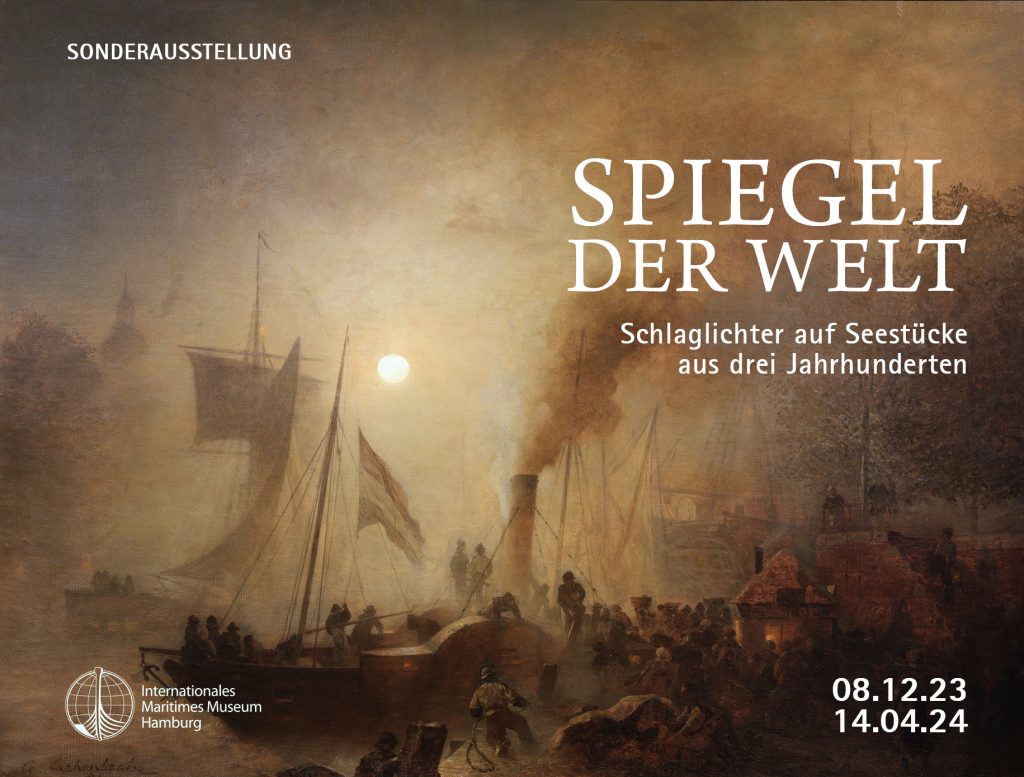Mirror of the World
The special exhibition „Mirror of the World – Spotlights on Seascapes from three Centuries“ will be shown on Deck 1 of the International Maritime Museum from 8 December 2023 to 14 April 2024.

„Capturing the world‘s most
Gustav Pauli, 1924
floating material in dry form“
The sea has always exerted a great attraction on many important artists. For centuries, the sea has been an expression of longing, the scene of great political events and a screen of artistic creation. In fact, without seafaring there would have been no cultural transfer across continental borders for centuries. Seascapes are more than simple depictions of maritime themes: They are landscape and history paintings, projection surfaces for atmospheres, emotions and human destinies as well as cultural mediators.

„The face of the sea has fascinated me since my childhood,“ said Professor Peter Tamm (1928-2016), founder and collector of the International Maritime Museum Hamburg. His decades-long passion for collecting has brought together high-calibre paintings from all eras of maritime art history. The museum can only present part of its art collection in the historic exhibition rooms. For the first time in the museum’s history, a special exhibition will bring together a selection of particularly high-quality seascapes from different eras, some of which have never been on public display before.

The exhibition focuses on the relationship between art and politics. It tells a European story from a maritime perspective in order to make the zeitgeist of international societies tangible. Phenomena such as the sensibility of Romanticism or the ambivalent relationship to technological technological progress can only be understood through the experience of cultural testimonies. Despite all the forces of nature, it is ultimately always people who are at the centre of the seascapes.
The exhibition begins in the 17th century in the Netherlands – the cradle of seascapes. It comes to a close in the late 19th century, when marine painting lost touch with avant-garde developments, the role of man in nature was no longer negotiated and seascapes went their own way as a highly specialised, autonomous genre.
